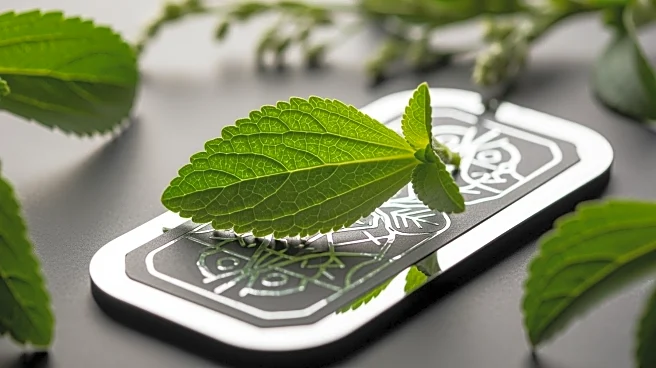What's Happening?
A new study has explored the potential of a Stevia-based patch to enhance hair regrowth. Researchers from China and Australia have developed a dissolving microneedle patch that combines minoxidil, a common
hair loss treatment, with stevioside, a natural sweetener from the Stevia plant. This innovative approach aims to improve the solubility and skin absorption of minoxidil, addressing limitations of traditional hair loss treatments. In tests conducted on mouse models, the patch demonstrated a significant increase in hair regrowth compared to standard treatments, suggesting a promising new avenue for addressing androgenetic alopecia, a common form of hair loss.
Why It's Important?
The development of a more effective hair regrowth treatment could have significant implications for the multi-billion dollar hair care industry. Androgenetic alopecia affects a large portion of the population, and current treatments often have limitations in terms of effectiveness and application. The use of a Stevia-based patch could offer a more efficient delivery method for minoxidil, potentially improving outcomes for individuals experiencing hair loss. If successful in human trials, this innovation could lead to new products and treatments, benefiting both consumers and companies in the hair care market.
What's Next?
The promising results from the mouse model tests indicate a need for further research, including clinical trials on humans, to confirm the efficacy and safety of the Stevia-based patch. Researchers will likely focus on understanding the patch's performance in human hair growth cycles and its potential side effects. Successful human trials could pave the way for commercial development and regulatory approval, potentially leading to a new product offering in the hair care industry.












